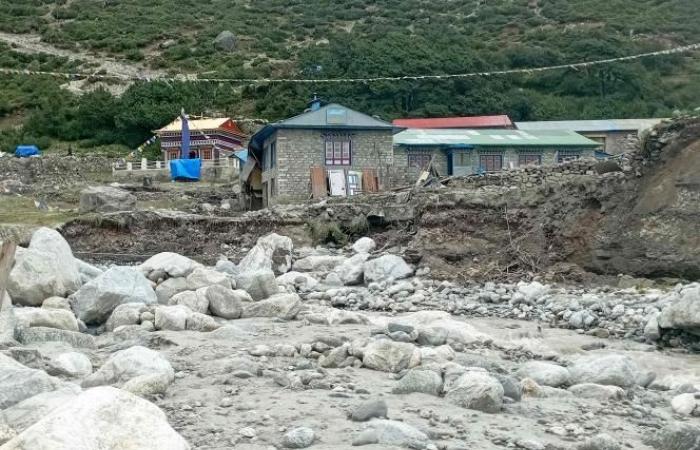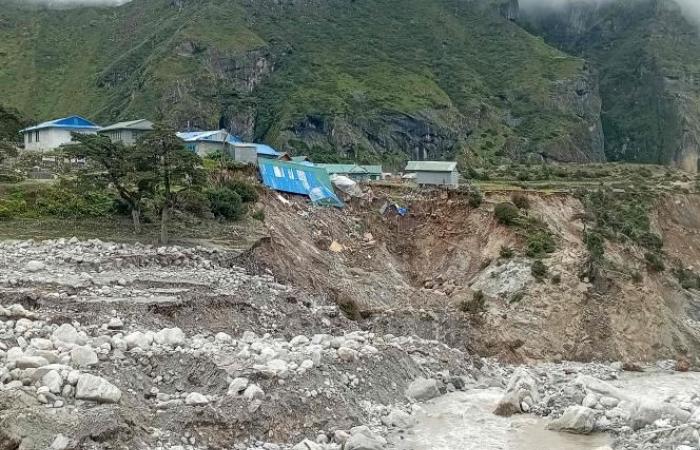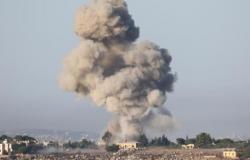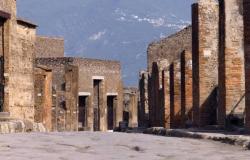En an instant, the wave took everything away. Two months ago, the Nepalese village of Thame, not far from Everest, was flooded by the rupture of a glacial lake, a phenomenon increasingly threatening with global warming.
Mingma Rita Sherpa was not at home when a torrent of mud and debris crossed the town on August 16 where Sherpa Tenzing Norgay was born, the first winner of the highest peak in the world with New Zealander Edmund Hillary in 1953.
When he returned from the hydroelectric dam where he works, half the houses in Thame were destroyed. A school, built in 1962 by Tenzing Norgay, a clinic and a lodge too. “There is no longer any trace of our house. Nothing more,” Mingma Rita Sherpa describes to AFP. “Everything we had is gone. My sister also lost everything.”
Luckily, the flood did not cause any casualties in this village at the end of the Khumbu valley where hikers who flock to the famous “trek” route around Everest stop off.
Catastrophic floods
The wave started from a glacial lake located upstream, at an altitude of around 3,800 m. Their water can suddenly flow downstream when it breaches the natural ice barrier that holds it back, causing catastrophic flooding.
In October 2023, more than 70 people were killed in northeast India after one of the 7,500 glacial lakes recorded in the country burst.
The catastrophic floods – more than 230 deaths and considerable damage – which hit Kathmandu and its region at the beginning of the month served as a reminder of Nepal’s vulnerability to climatic phenomena, the intensity and frequency of which are aggravated by global warming.
Scientists fear that rising global temperatures, which are melting Himalayan glaciers at an alarming rate, are also accelerating the rupture of glacial lakes.
Since the flood in August, many residents of Thame have taken refuge in surrounding villages or settled in the capital Kathmandu, like Mingma Rita Sherpa.
“Some have tried to rebuild their houses but the land is unstable,” he reports. “We are afraid to go home, there are still lakes above. The fertile land has disappeared. It became difficult to imagine a future there.”
A village employee, Mingma Chiri Sherpa, assures that the municipality has inspected the land and lakes in the region to assess the risks. “Our priority is first to help the victims (…) to rebuild or rehouse,” he assures.
More than 2,000 lakes
Hundreds of glacial lakes have formed in recent decades on the slopes of the Himalayas. The International Center for Integrated Mountain Development (Icimod) identified 2,070 in 2020. Among them, 21 are considered dangerous for populations.
Member of this intergovernmental organization, the geologist Sudan Bikash Maharjan is part of the team which, thanks to satellite images, was able to attribute the flooding of Thame to the rupture of a glacial lake. “We need to strengthen our surveillance system (…) so that we can at least anticipate and prepare,” he argues. “The risks exist, we must inform the populations of them.”
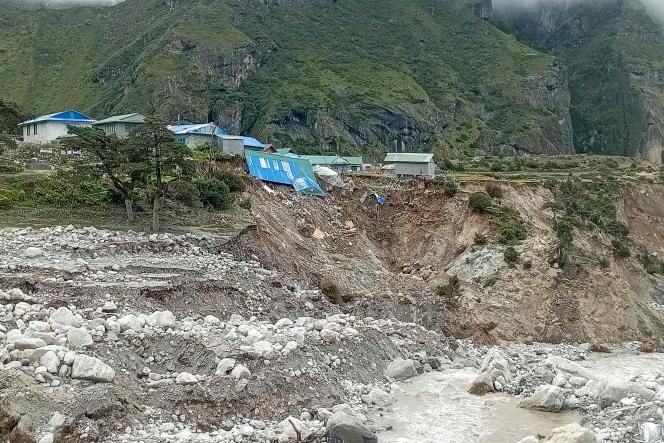
A true “mountain climbers’ village”, Thame has welcomed many prestigious residents such as Kami Rita Sherpa, who climbed the highest peak in the world for the 30e times this season.
With others, the climber participated in fundraisers to help affected residents. “But to this day, this place no longer has a future,” laments Kami Rita Sherpa. “We are in danger. Not just here in Thame, but also in many other villages downstream.” As a veteran of the slopes of Everest and other peaks in the region, the mountaineer has himself observed the impact of global warming. “The Himalayas have changed. We have not only seen the impact of climate change, we have experienced its dangerous consequences,” he observes, “we must react.”


